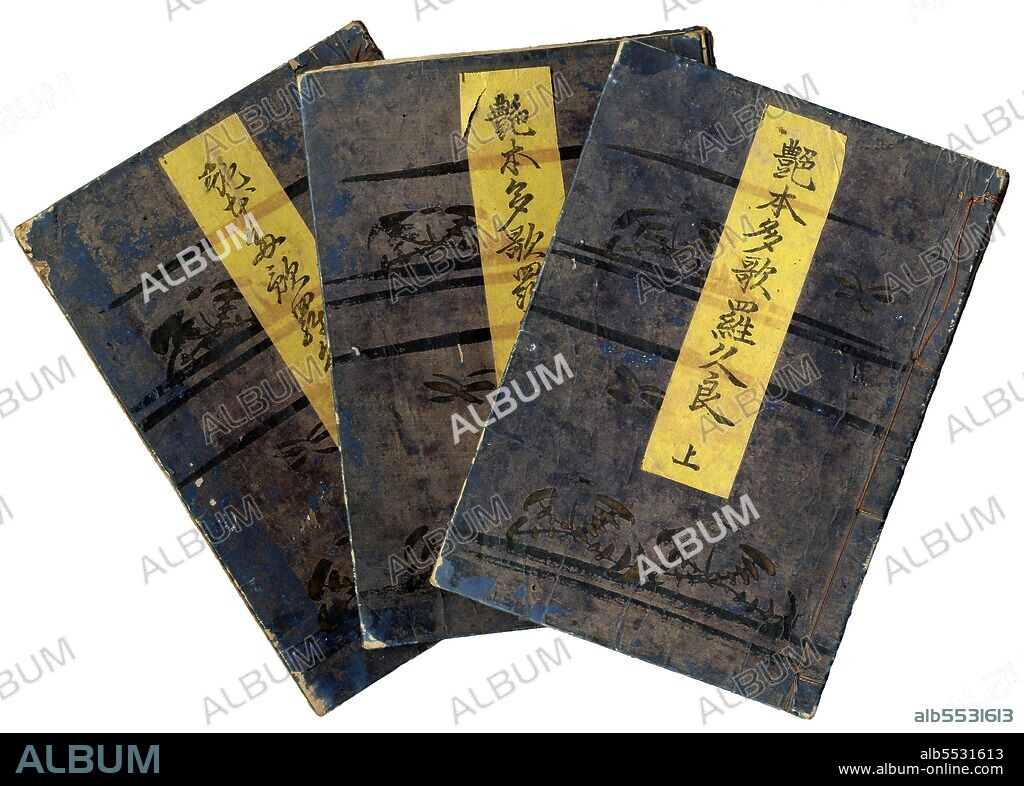alb5531613
Japan: A set of three enpon (bound collections of shunga in book form) illustrated by Kitagawa Utamaro (1753-1806) with text by Bakin, issued in Edo (Tokyo),1800

|
Ajouter à une autre Lightbox |
|
Ajouter à une autre Lightbox |



Avez-vous déjà un compte? S'identifier
Vous n'avez pas de compte ? S'inscrire
Acheter cette image

Titre:
Japan: A set of three enpon (bound collections of shunga in book form) illustrated by Kitagawa Utamaro (1753-1806) with text by Bakin, issued in Edo (Tokyo),1800
Légende:
Voir la traduction automatique
Shunga (???) is a Japanese term for erotic art. Most shunga are a type of ukiyo-e, usually executed in woodblock print format. While rare, there are extant erotic painted handscrolls which predate the Ukiyo-e movement. Translated literally, the Japanese word shunga means picture of spring; 'spring' is a common euphemism for sex. The ukiyo-e movement as a whole sought to express an idealisation of contemporary urban life and appeal to the new chonin class. Following the aesthetics of everyday life, Edo period shunga varied widely in its depictions of sexuality. As a subset of ukiyo-e it was enjoyed by all social groups in the Edo period, despite being out of favour with the shogunate. Almost all ukiyo-e artists made shunga at some point in their careers, and it did not detract from their prestige as artists. Classifying shunga as a kind of medieval pornography can be misleading in this respect.
Crédit:
Album / Pictures From History/Universal Images Group
Autorisations:
Modèle: Non - Propriété: Non
Questions sur les droits?
Questions sur les droits?
Taille de l'image:
5000 x 3578 px | 51.2 MB
Taille d'impression:
42.3 x 30.3 cm | 16.7 x 11.9 in (300 dpi)
Mots clés:
ART (CATÉGORIE) • ART • ART, PEINTURE • ASIE • ASIE, CONTINENT • CONTINENT ASIE • ECRITURE LIVRES • FEMELLE • FEMM • FEMME • HISOIRE • HISTOIRE • JAPON • JAPONAIS • JAPONAISE • KITAGAWA UTAMARO • LIVRE (OUVRAGE) • LIVRE • LIVRES • ORNEMENT, JAPONAIS • PEINTURE • TABLEAU • TABLEAUX
 Pinterest
Pinterest Twitter
Twitter Facebook
Facebook Copier le lien
Copier le lien Email
Email
